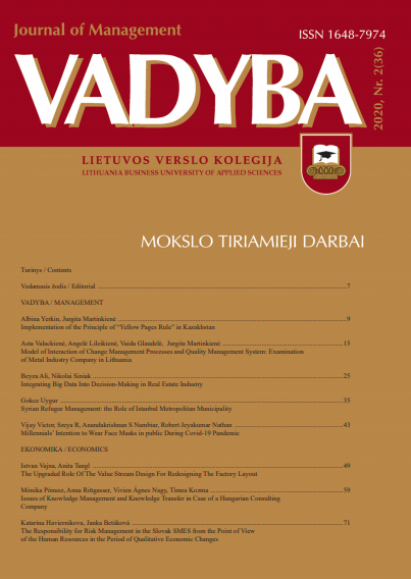ROBOTIC PROCESS AUTOMATION FOR DOCUMENT PROCESSING: A CASE STUDY OF A LOGISTICS SERVICE PROVIDER
ROBOTIC PROCESS AUTOMATION FOR DOCUMENT PROCESSING: A CASE STUDY OF A LOGISTICS SERVICE PROVIDER
Author(s): Valentas Gružauskas, Diwakaran VeeraraghavanSubject(s): Transport / Logistics
Published by: Lietuvos verslo kolegija
Keywords: Robotic Process Automation; Logistics; Competitiveness;
Summary/Abstract: Today we discover ourselves in different transformational periods of human history. Significant as the farming and industrial revolutions before it, this digital reconstruction is redefining various characters of contemporary life throughout the world. Artificial intelligence (AI) represents a frequently fundamental role in this transformation. In modern years, AI has become booming over analysis labs to become omnipresent and ambient in people’s personal lives to such a great extent that many purchasers do not recognize people use commodities and applications that contain AI daily.All business areas profit immensely from computer vision and robotic process automation, achieving strides in its adoption from customer segments to companies and manufacturing companies. Logistics is beginning its mission to grow an AI-driven business, though this expectation is still rife with difficulties to succeed and possibilities to exploit. In this respect, the integration of robotic process automation and computer vision is a very lately introduced solution to the real world. This research work is an attempt to examine the benefits and improvement in the supply chain service brought up by automated extraction from documents to the database. It also analyses what computer vision (CV) is, and what it means for the organization to convert robotic process automation (RPA). The best practical examples from other industries can be applied to transportation logistics service by implementing CV. The research work also analyses how RPA and CV can be used in transportation logistics to reinvent back office, operational, and customer and employee facing activities. Also, implementation measures and efficiency have been proposed through the RPA enabled process flow diagram, and cost planning. Lastly, an approximate amount of money that the company can save through the implementation of this project is provided, which can give a competitive advantage to the company.
Journal: VADYBA
- Issue Year: 36/2020
- Issue No: 2
- Page Range: 119-126
- Page Count: 8
- Language: English

